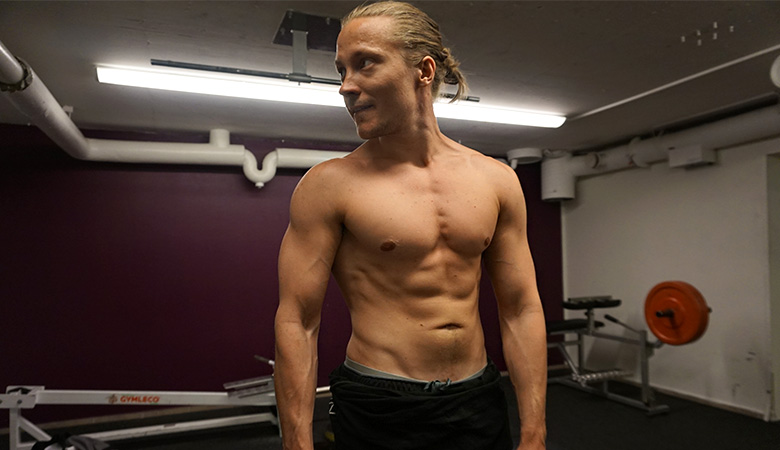
During my 5 years of strength training I’ve tried a lot of different training styles and methods. I’ve tried everything from training only 2 times per week for 30 minutes each, to training 6 times per week for 90 minutes each.
From all of this experimentation I’ve found out that I ALWAYS get the best results as well as feel my best when I train less instead of more. In a way this feels incredibly counterintuitive, but there are good logical explanations for why less is often more when it comes to gaining strength and muscle mass.
In this post I will cover the training style/method known as minimalist training. I will cover why I believe it to be a superior approach compared to other approaches when it comes to building strength and muscle mass as a natural trainee, and by the end I will also explain how you can set up your own minimalist training program.
Let’s go!
SARMs Cutting Stack
- Cuts down excess fat
- Enhances metabolism
- Fast and effective results
- Fuels fat burning
Prime Shred
- Activates Body’s Fat-Burning Hormones
- Fast, whole body fat burning
- Vegetarian & vegan friendly
Table of Contents
What is Minimalist Training?
Minimalist training is simply a concept of doing less but achieving similar or better results. Minimalist training is a style of training characterized by simplicity as it involves minimal equipment, minimal time, minimal space, yet it provides you with great results.
The 80/20 Rule
The minimalist training approach takes advantage of something called the 80/20 rule.
You see, the 80/20 rule means that 80 percent of all results come from 20 percent of the effort.
For instance, in a company, 20 percent of the employees are responsible for 80 percent of the work being done.
When it comes to traffic, 20 percent of drivers cause 80 percent of all traffic accidents.
Well, the same rule holds true when it comes to building strength and muscle, 20 percent of the work you do in the gym are responsible for 80 percent of your results.
This has been seen over and over again in exercise research as well. For insance, in this study researchers found that adding more training volume leads to diminishing returns. This means that each additional set an individual do in the gym causes less and less gains than the previous one. In other words, you get a lot of gains from your first set, less from your second, even less from your third and so on.

Why do Minimalist Training?
So, what does minimalist training and the 80/20 rule mean for you? Why should you bother learning about minimalist training?
Well, there are 4 big reasons for why doing minimalist training is a good idea, and these are:
1. Better Results During Your First Few Years Of Training
This is the big one and the one that I’ve notice first hand from personal experience to be true.
You see, anywhere we look, whether that’s on Instagram, YouTube or Reddit we get bombarded with information such as; “If you want to gain strength and size you must train for 2 hours 4-5 times per week” or “To get big and strong you must do these 12 different exercises on your chest day”.
But, this information is plain out wrong for the majority of people…
Why do I say that?
Well, because the guys preaching these high volume workouts and routines have been training for 10+ years and can in most cases allocate all their time to training and recovering.
But, for the average gym goer who has only been training for a couple of years, has a job that takes up 8-9 hours of the day and other obligations to care for, this amount of workload is not only unnecessary and inefficient use of time, it is hands down bad.
But, Isn’t Volume The Main Driver of Muscle Growth?
Well it is, but if there’s one thing research is clear on is that more training volume (the total amount of training you do) is only better up to a point, and that point is determined by training experience and the trainees ability to recover.
This means that most guys who jump on their favorite Instagram influencers high volume program actually hinder their gains simply because they’re constantly training above what their bodies are able to adapt to.
Basically, this means that all their bodies are able to do is recover their neurological and muscular system back to baseline but not adapt to the stimulus as well. And you WANT adaptation, as that is what causes you to gain strength and muscle.
Sure, some time in the future training with more volume might be good for you. Heck at some point it will most likely be needed for you to continue making progress.
But, it’s likely going to be multiple years before this is the case, and if you try to force more volume today, you will inevitably burn out and slow down your rate of gains.
More training volume should only be added as needed and it should be done so slowly over the course of multiple years. If you focus on getting stronger with a minimalistic approach and then slowly adding volume (without rushing) throughout your training journey then you will see AMAZING results.
2. Time Efficient
The second reason why minimalist training is a good idea is because it’s very time efficient.
By training with a minimalistic routine you get a lot of time left over to enjoy your lifestyle. I mean, what’s the point of building a great body if you can’t enjoy it?
The more efficient you can be with your training the more energy you can spend on other things that enhances your lifestyle, while also looking and feeling strong in the meantime.
3. Lower Injury Risk
Beyond training with poor technique and going to complete muscular failure on all your sets, training with high volumes increases injury risk a ton.
You see, by taking the minimalistic approach to strength training, as long as you are lifting correctly you will drastically lower your risk of injury.
The reason your injury risk goes down is because when you are training with lower volumes but higher intensities you are able to recover well between sessions, and a well recovered neuromuscular system is a healthy and non-injury prone one.
4. Optimal For Fat Loss
Lastly, minimalist strength training is AWESOME for fat loss.
During a cutting phase you will eat less food which is required for creating a calorie deficit. This means that your recovery capacity will be drastically reduced since you take away one of the biggest factors for recovery i.e. calories.
Doing tons of sets and reps on a dussin various exercises when cutting is a recipe for disaster. You simply can’t handle that amount volume while in a calorie deficit.
Your main goal when cutting is to recover, as not being able to recover for a prolonged period of time will simply lead to strength and muscle loss.
For this reason taking a minimalistic approach to training where you focus more on intensity (the weight on the bar and the effort of each set) rather than volume (the total amount of training) will lead to A LOT better fat loss results during your cutting phase.
How to Set up a Minimalist Training Program
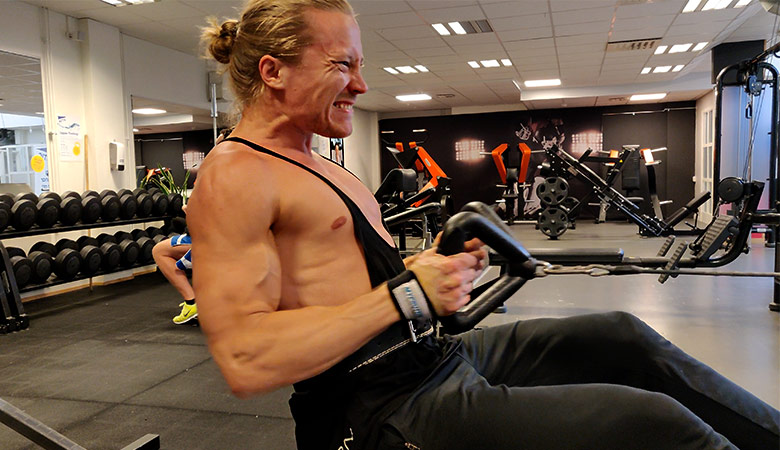
Okay, so now that you know why the minimalist strength training approach is so great, it’s time to get to the nitty gritty of how to set it up.
Step 1: Use The Most Effective And Efficient Exercises
The pure essence of the minimalist training system is to get as much results out of a little effort as possible, and when it comes to picking exercises there is only one right choice.
Compound exercises!
Compound exercises like bench presses, pull ups, shoulder presses, dips, squats and deadlifts all stress as many muscles as possible on the body simultaneously.
By doing your best to get stronger on these exercises you will send STRONG signals to your body that it needs to grow in order to handle the training better in the future.
But What About Isolation Exercises?
Way to many people, especially beginners, believe that to, for example build big arms, or a big back, or a great looking chest, they just have to focus on those muscle groups with isolation exercises such as curls, pullovers or flyes.
But unfortunately, that won’t work very well.
You see, not only would you have to do A TON more work with isolation exercises to achieve even close to the same training stimulus as you would with compound exercises, you would actually send suboptimal signals to your body in the first place.
To more clearly illustrate my point for why doing tons of isolation exercises is simply a waste of time I like to ask the following question:
Have you ever seen someone with big 18 inch (45 cm) arms that also has a small upper body? If you have, that person would look something like this:
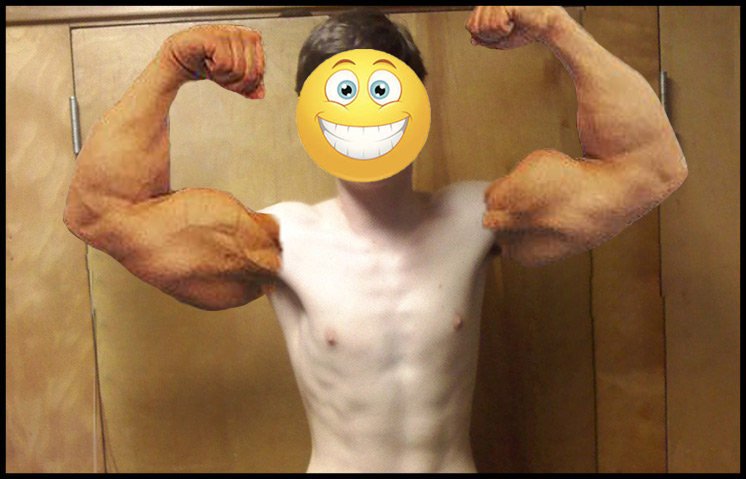
This type of development is not possible, it’s not how our bodies work. And this is how most people think that they will build up their arms, or which ever muscle group they want to make bigger.
But the truth is that in order to get big arms the training you do must make your whole upper body bigger. You see, in order to look like this:
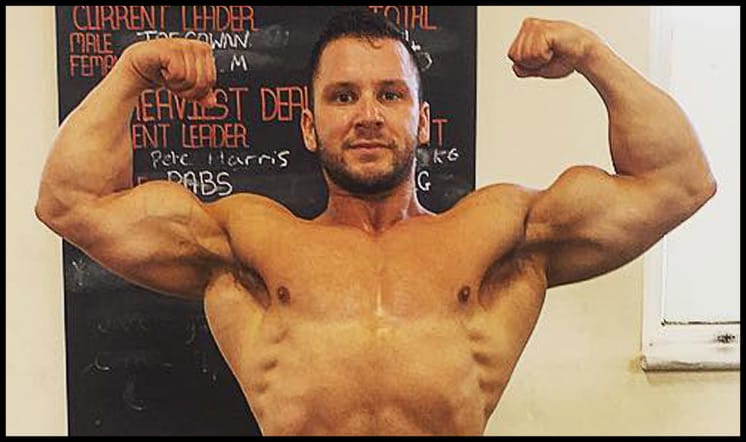
You must train with big compound lifts that effectively stresses your whole upper body and send the strongest signal to your body to make everything bigger.
So to summarize why we want to focus on compound exercises:
- They are more efficient at building strength and muscle.
- They are more effective at building strength and muscle.
Step 2: Train 3 days per week
First of all, training 3 days per week as opposed to 4,5 or even 6 days will leave you with a ton of spare time to focus on other things outside of training. To me this is called freedom.
But above this obvious fact, training only 3 days per week on non-consecutive days, will provide you with sufficient recovery between sessions, which then allows you to achieve the quickest progressive overload possible, which is key for strength gains and muscle growth.
In fact, when you lift too frequently and perform too many exercises and sets during your workout, progressive overload becomes increasingly more challenging to achieve. In other words, it becomes harder and harder to make strength gains.
The reason for this is that it takes the central nervous system around 48 hours to completely recover. This means that, if you are lifting on multiple days in a row, you won’t be able to optimally recruit your muscle fibers on your consecutive days. This means you will get less results for more effort simply because you come into the gym unable to perfom at your best.
Furthermore, training 3 days per week will provide you with the opportunity to train each muscle group every 4-5 days. This is the perfect training frequency for strength gains and muscle growth.
Step 3: Use Reverse Pyramid Training (RPT)
Nothing beats the effectiveness and efficiency of doing reverse pyramid training (RPT).
RPT is a training style where you perform your heaviest set first and then pyramid your way down in weight and usually do more reps on your subsequent sets.
Here’s an example of an exercise done with RPT:
- Warm-up sets
- Rest 1-2 min
- First Set: 4 reps x max weight you can lift for 4 reps with good technique and form
- Rest 3 min
- Second Set: 6 reps x max weight you can lift for 6 reps with good technique and form (7.5-10% less weight than first set)
- Rest 3 min
- Third Set: 8 reps x max weight you can lift for 8 reps with good technique and form (7.5-10% less weight than second set)
RPT is all about intensity of effort. Your first set is an all out set (after a brief warm-up) and then you do a couple sets that are lighter afterwards.
RPT takes advantage of the fact that it is your first 2-3 sets of training a muscle group that stands for more than 80-90% of the maximum stimulus for growth.
I’ve written a complete guide for setting up reverse pyramid training that you can read here. But in short, the benefits of RPT are as follows:
- Benefit #1 – Time Efficient
- Benefit #2 – Effective When Cutting
- Benefit #3 – You do Your Heaviest Set First When Completely Fresh
- Benefit #4 – You Perform Only One Set With Maximum Effort
- Benefit #5 – You do Easier Sets After Your First All Out Set
Together these 5 benefits make RPT the most effective and efficient training style in the world!
Do Between 5-10 Sets Per Exercise Per Week
When it comes to the amount of volume you should do, I recommend doing 5-10 total sets per muscle group per week.
Research has shown that this is the optimal amount of training volume for most people between 0-5 years of training experience. You should start with the lower volume and slowly add in more volume as you get more advanced. Also, bigger muscle groups can handle a bit more volume than smaller.
Most people that I help think that they are doing too little when training only 3 times per week with 5-10 sets per muscle group. They simply feel like they can handle way more after each workout is done. They also feel like they can’t possibly build any muscle with a routine that is so simple and “easy”.
But, the fact is that muscle grow because of progressive overload, not because how hard the workout was, how sore it made them feel or how long it took them to complete.
The only way you should judge your workouts is by how effective they are at improving your strength on your lifts. That’s it. If you are getting stronger by adding weigh to the bar workout to workout or week to week then you are killing it and should only focus on keep on doing so!
If you add extra sets or exercises, you’re simply removing the effectiveness of the workout by making it harder to make progressive overload.
Just think about this for a while: If you go from bench pressing 165 lbs for 5 reps to bench pressing 225 lbs for 5 reps you will see a LOT of growth in your chest, shoulders and triceps. There’s simply no way around that.
Step 4: Train in The 4-10 Rep Range
Research has shown that we can grow muscle in a very wide rep range. In fact, in this study they found that muscle growth can occur with weights that are as light as 30% of your 1RM (which would mean a weight you can do around 50-60 reps with).
But, when it comes to effectiveness and efficiency (what we want to achieve with the minimalistic approach), training within the 4-10 rep range is the best choice by far.
By training in the 4-10 rep range you will achieve the perfect balance between effectively getting in enough training volume, while still working with heavy enough weights to maximize mechanical tension on the muscles, which are one of the key factors to more quickly and conveniently achieve muscle growth.
You see, training with weights that are heavy which stimulates more mechanical tension (stretching and contracting under load) than metabolic fatigue (the pump) is very beneficial if you are looking for the most effective way to gains strength and muscle mass.
In fact, if you were to train with high rep and low loads, you would have to take all your sets to the point of absolute failure to get the same effects on muscle growth that you would from sticking with fewer reps and heavier weights.
In this study they actually tried to get the same stimulus for growth as someone would from lower reps, but instead using higher reps. The participants felt constant nausea during the workout, and some even threw up from all the lactate that was built up to achieve the stimulus. That doesn’t sound too enjoyable to me…
So, it’s much more effective to train with strength in mind, which is to go for between 4-10 reps on most of your exercises, as this will make your workouts a lot more effective and enjoyable.
Furthermore, what makes the 4-10 rep range so great is that it’s not too heavy either. If you were to train with fewer reps than four, you would need to do more total sets to reach the same volume threshold to create a good enough stimulus for growth.
This is in many cases not sustainable either, since a lot of sets with very heavy weights is more demanding on your joints, ligaments and central nervous system, rather than on your muscles.
Finally, the 4-10 rep range is also the easiest to make progressive overload in which as we talked about earlier is the msot important factor for gains in strength and muscle mass. And there’s two reasons for that:
- It’s very easy to keep track of your workouts and weights, because you can typically make larger leaps in weight which are easier to track. And tracking is key for successfully achieving progressive overload.
- Lots of people find it more enjoyable moving heavier rather than lighter weights, and enjoyment to training should definitely not be taken for granted, as it’s been shown repeatedly that aroused lifting cause more gains than merely going through the motion in the gym.
So, working in the 4-10 rep range comes with a bunch of advantages. And if you haven’t trained much in this rep range before, be ready to experience a lot of strength gains followed by new muscle mass once you get started.
Step 5: Train With a 2 Day Split
I’ve found that the most effective way to train for strength and muscle gains is with a 2 day training split.
A 2 day split is where you train upper body on one workout and lower body on another workout.
The minimalist 2 day split could be laid out like this:
Week 1:
- Monday – Workout A
- Wednesday – Workout B
- Friday – Workout A
Week 2:
- Monday – Workout B
- Wednesday – Workout A
- Friday – Workout B
Then you start over with week 1 and repeat.
The reason why this type of split is so effective is first of all because you, as we covered earlier, let your central nervous system recover between your sessions so that you are always ready to crush the weights in the gym.
Secondly, your local muscle nerves and your muscle protein synthesis need at least 4-5 days of recovery between each session. And with this 2 day split you will train your muscle groups once every 4-5 days as well, making it the perfect split for recovery and quick strength gains.
Sample Minimalist Training Routine For Strength And Mass
Okay, so it’s time to put everything that we have talked about into one routine.
Here’s an example routine that’s built on these principles that I got from Radu’s ShredSmart Program:
The 3 Day a Week 2 Day Split Routine
Workout A: Chest, Shoulders, Triceps
- Incline Bench Press: 3 sets (RPT – 5,6,8)
- Standing Press: 3 sets (RPT – 5,6,8)
- Lateral Raises: 3 sets x 8-12 reps
- Skull Crushers: 3 sets x 6-10 reps
Workout B: Back, Biceps, Traps, Legs
- Weighted Pull Ups: 3 sets (RPT – 5,6,8)
- Sumo Deadlifts: 3 sets (RPT – 5,6,8)
- Bent Over Flyes: 3 sets x 8-12 reps
- Barbell Curls: 3 sets x 6-10 reps
This is the workout I started doing immediately once I bought the ShredSmart program, and it definitely helped me transform my physique quicker than ever before.
I’m now using the same principles but with a bit more training volume and more exercises as I’ve passed 5 years of lifting. But, the routine outlined above helped me gain a lot of strength and muscle for a long time:
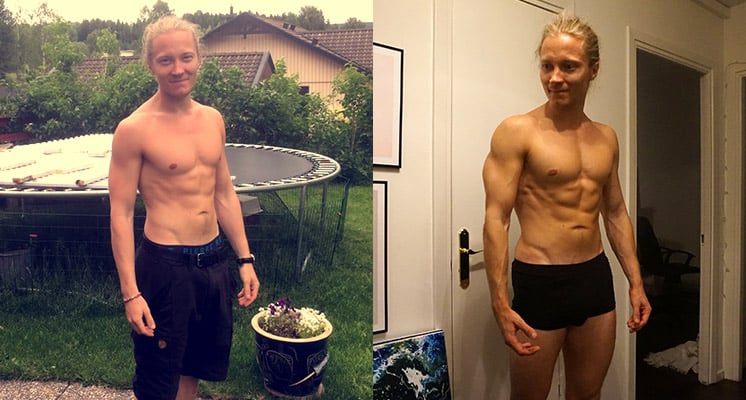
What’s Next?
Okay so there we go, we have just covered the power of the minimalistic strength training approach.
Now training is only part of what makes up a great looking aesthetic physique. You must also make sure you set up the correct nutrition strategies as well as finding out where to begin depending on your starting point.
To learn all of this I recommend reading my completely free guide called: How to Build an Aesthetic Physique here.


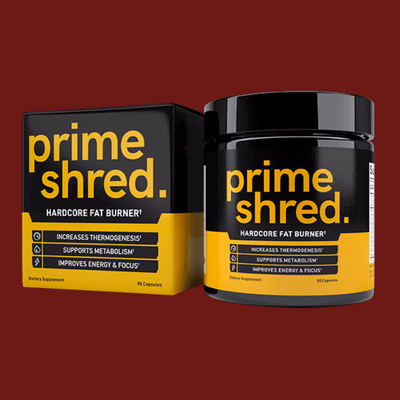
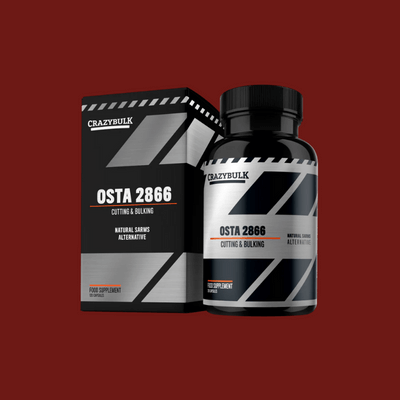
Hey, thanks for the article. How about abs training? How should I do that? Can you give me a sample program for that as well?
Hey, ab grows fairly very well from compound lifts but if you want to maximize ab growth I recommend doing isolation exercises for your abs. To learn which exercises check out this article: https://www.ironbuiltfitness.com/should-you-train-your-abs-while-bulking
Great content! Super high-quality! Keep it up! 🙂
Thank you!
Hey!! Absolutely loved your article man. How should my nutrition be along with this type of training if my goal is to build muscle. Should i eat at maintenance or in a surplus?
Hey, thanks!
It depends a bit on your starting point. If you’re more on the skinnier side I recommend that you go with a slight surplus to pack on muscle quicker. If you’re on the “fluffier” side then I recommend maintenance because then you’ll be able to use some body fat as fuel for the muscle building process and in doing so lose a bit of fat as you build the muscle 🙂